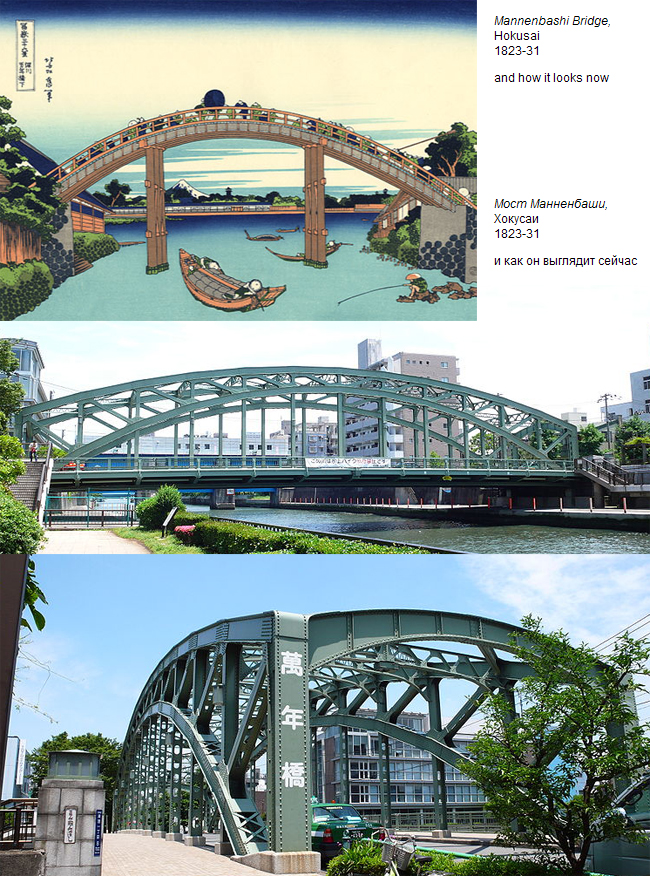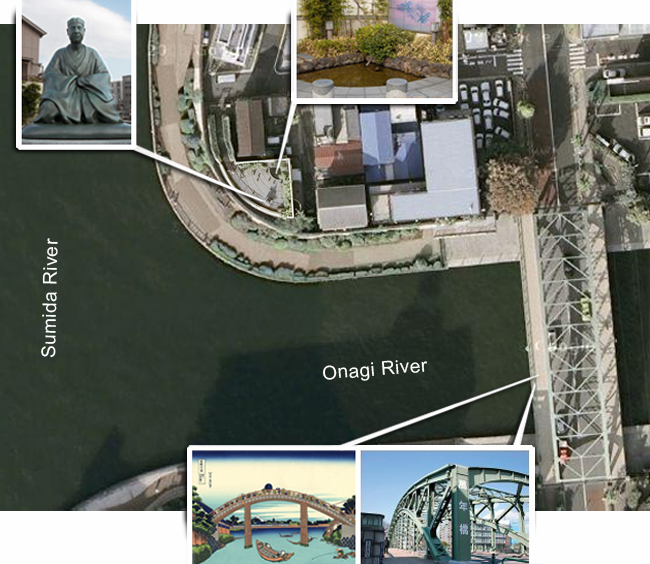
Basho Museum | Музей Басё |
||
Basho Museum is a small place on the banks of the Sumida River, the exhibits consist mainly of calligraphy scrolls with a little realia from Basho’s life and times thrown in. There is also a room for the hokku classes. |
||
After having written his famous frog haiku right here, in Morishita (now a Tokyo neighborhood), Basho has been given a stone frog, that he treasured. It was pride of Basho Hermitage until the hermitage disappeared, and it was lost. It reappeared in 1917, occasioning the establishment of the Basho shrine. However, it disappeared again in an air raid in March 1945, to be replaced 30 years later in 1975 with a replica.
But in 1980, with the inauguration of the Matsuo Basho Museum, a member of the Basho Preservation Society found the frog hidden away in the family safe! После написания своего знаменитого хокку про лягушку именно здесь, в Моришите (ныне район Токио), Басё получил в подарок каменную статую лягушки, которой очень дорожил. Она была гордостью Приюта Басё ("Банановая келья" или "Обитель банановых листьев") , пока приют не исчез, и лягушка была потеряна. Она снова нашлась в 1917 г., что стало причиной основания алтаря/места поклонения Басё. Однако она опять пропала после воздушного рейда в марте 1945, и через 30 лет в 1975 г. была заменена копией. Но в 1980 г., как раз перед открытием Музея Мацуо Басё, член Общества по Сохранению Наследия Басё обнаружил её в одном из семейных сейфов! |
||
In the garden that is a small version of Basho's garden, stand a few haiku stones as well as a miniature copy of Basho’s hut. To remain wholly in style, the garden is full of plantains ('Basho' literally means 'Japanese banana plant', and it was from this that he adopted his pen-name). В саду - уменьшенной копии сада Басё - стоят несколько камней с хокку, а также миниатюрная копия его хижины. Для поддержания настроя, кругом много банановых пальм ("Басё" дословно означает "японское банановое дерево", именно отсюда Басё и взял свой псевдоним). |
||
.jpg) |
||
The Frog Haiku represents a real landscape; tiny ponds around the "Plantain Hermitage" in small Edo suburb, called Fukagawa. It was right here. Now Fukagawa is part of Tokyo, and Morishita is the northern part of Fukagawa. |
||
This is the Plantain Hermitage. In this hut Basho stayed between his travels. Вот она, "Банановая келья" или "Обитель банановых листьев". В этой хижине Басе отдыхал в промежутках между своими путешествиями. |
||
Model of the Basho hut / Уменьшенная хижина Басё
|
||
200 meters from the museum, overlooking the confluence of the Sumida and Onagi rivers, is the elevated Basho Memorial Park, officially an annex of the Basho Museum. At the top of a short flight of stairs, it is dominated by a bronze statue of the seated poet, and flanked by Japanese banana plants with a pond full of tadpoles or frogs (depending on the time of year) in one corner. This spot has a touching commemorative significance, since it's herewhere Basho most likely sat, watched over the rivers and bridges, listened to frogs and composed his poems.
В 200 метрах от музея, прямо над местом слияния рек Сумида и Онаги возвышается Мемориальный Парк Басё, часть Музея Басё. Наверху каменной лестницы появляется бронзовая фигура поэта, сам пятачок парка окружён банановыми деревцами, а в углу пруд, наполненный лягушками или головастиками (зависит от времени года). Это место имеет трогательное памятное значение, потому что именно здесь Басё сидел, наблюдал за реками и мостами, слушал лягушек и писал свои хокку. |
||
|
||
|
||
Did you recognize the image on the fence? It's by Hokusai himself. Why is it here? It's a favorite Basho's bridge. Everything is at its place. / Вы узнали картинку на заборчике? Сам Хокусаи, между прочим. А почему она здесь? А потому что это любимый мост Басё. Всё на своем месте. |
||
 |
||
View from above / Вид сверху  |
||